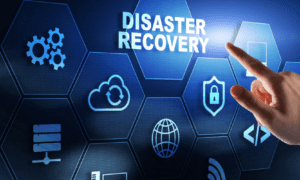In today’s fast-paced technological landscape, disaster recovery (DR) has become a fundamental pillar of operational resilience. Somaning Turwale’s exploration of cloud-based DR solutions highlights innovative approaches transforming business continuity planning. Leveraging a career deeply rooted in technological advancement, the focus is on integrating cutting-edge methodologies to address the evolving demands of modern enterprises. This perspective showcases the critical role of adaptability in DR strategies, redefining standards for ensuring seamless operations and resilience in the face of disruptions.
The Paradigm Shift to Cloud Resilience
Traditional disaster recovery models hinged on physical infrastructure—redundant servers, off-site backups, and manual failover protocols. While reliable in the past, these methods posed significant limitations in scalability, cost, and complexity. Cloud-based DR solutions have revolutionized this space by offering virtualized environments that adapt to fluctuating workloads, ensuring cost efficiency and operational flexibility. Organizations are achieving unparalleled recovery speeds and reliability by leveraging continuous data protection, automated orchestration tools, and robust compliance frameworks.
Metrics That Define Success
Key performance indicators such as Recovery Time Objectives (RTO) and Recovery Point Objectives (RPO) serve as benchmarks for DR effectiveness. Cloud solutions now deliver RTOs under 15 minutes and RPOs in seconds for critical applications, metrics once considered unattainable in traditional setups. Advanced replication technologies and seamless failover capabilities ensure enterprises resume operations with minimal disruption.
Automation: The Game Changer
Automation has become a cornerstone of cloud-based DR, replacing manual processes with intelligent systems that handle failover, replication, and monitoring. These features significantly reduce human error, improve consistency, and enhance recovery efficiency. Automated compliance checks further ensure adherence to stringent regulations without burdening IT teams.
The Role of Scalability and Cost Optimization
Scalability stands out as a key advantage of cloud-based disaster recovery (DR) solutions, allowing organizations to handle data volumes ranging from gigabytes to petabytes with ease. As business needs grow, these solutions adapt seamlessly without requiring costly infrastructure upgrades. The pay-as-you-go pricing model further enhances their appeal, eliminating the financial burden of traditional DR systems and ensuring cost efficiency. By providing advanced recovery capabilities that scale with demand, cloud-based DR solutions become accessible and practical for enterprises of all sizes, supporting resilience and operational continuity.
Security: A Non-Negotiable Priority
Cloud-based disaster recovery (DR) solutions incorporate advanced security measures beyond basic encryption. Multi-factor authentication adds an extra layer of protection by requiring multiple forms of verification, while role-based access controls ensure that only authorized personnel can access critical data. Automated threat detection actively monitors for vulnerabilities, providing real-time responses to potential breaches. Together, these features create a robust security framework that safeguards sensitive information, minimizes risks, and ensures adherence to global regulatory standards. This comprehensive approach strengthens trust and reliability in cloud-based DR environments.
Bridging Challenges with Innovation
Despite its advantages, cloud DR implementation comes with challenges such as integrating legacy systems, ensuring network reliability, and addressing team skills gaps. Innovative frameworks now guide organizations through these hurdles, emphasizing phased migrations, thorough testing, and continuous training programs.
Multi-Cloud and Hybrid Approaches
The growing adoption of multi-cloud and hybrid disaster recovery (DR) strategies underscores the importance of redundancy and customization in modern IT environments. These approaches enable organizations to mitigate risks by distributing workloads across multiple providers, ensuring no single point of failure. By leveraging the distinct strengths of each cloud provider, businesses can create flexible and robust recovery frameworks tailored to their specific operational needs. This customization allows for optimized cost management, enhanced resilience, and seamless integration of diverse technologies, ultimately ensuring faster and more reliable disaster recovery.
A Blueprint for the Future
Emerging trends in cloud disaster recovery (DR) focus on AI-driven recovery orchestration and quantum-safe security measures. These advancements enhance efficiency by automating workflows, improving speed and accuracy in analyzing failures and executing recovery plans. Quantum-safe measures fortify data integrity against future cryptographic threats. Together, these innovations ensure robust, secure, and resilient disaster recovery, addressing the evolving demands of modern cloud ecosystems with more excellent reliability and adaptability.
In conclusion, Somaning Turwale’s analysis reveals the transformative impact of cloud-based disaster recovery. Aligning technology with strategy ensures innovation, resilience, and operational safety. This roadmap equips enterprises to navigate complexities and drive future-ready continuity solutions.


































